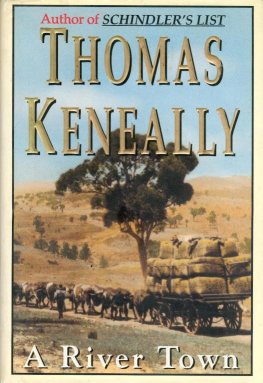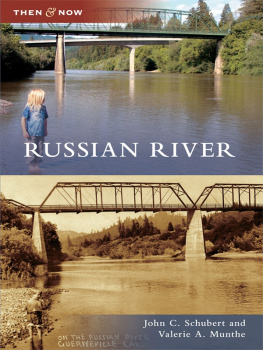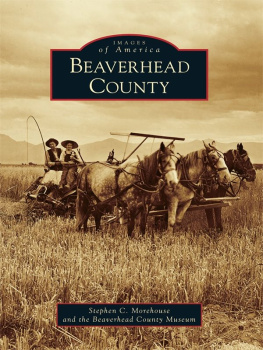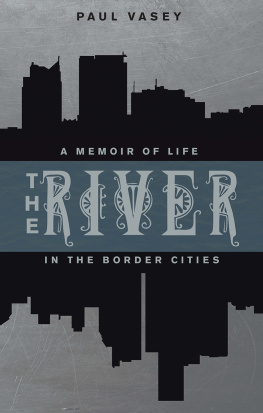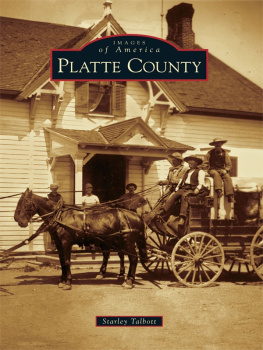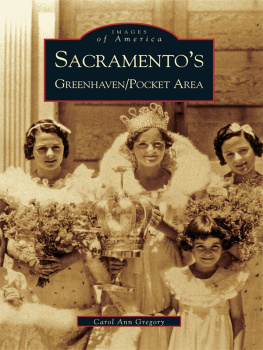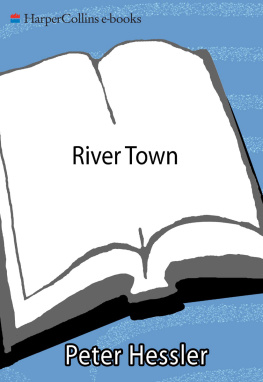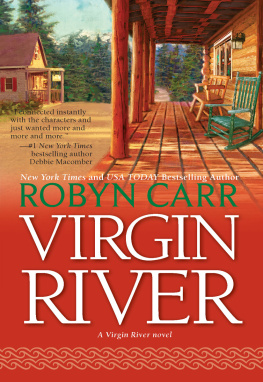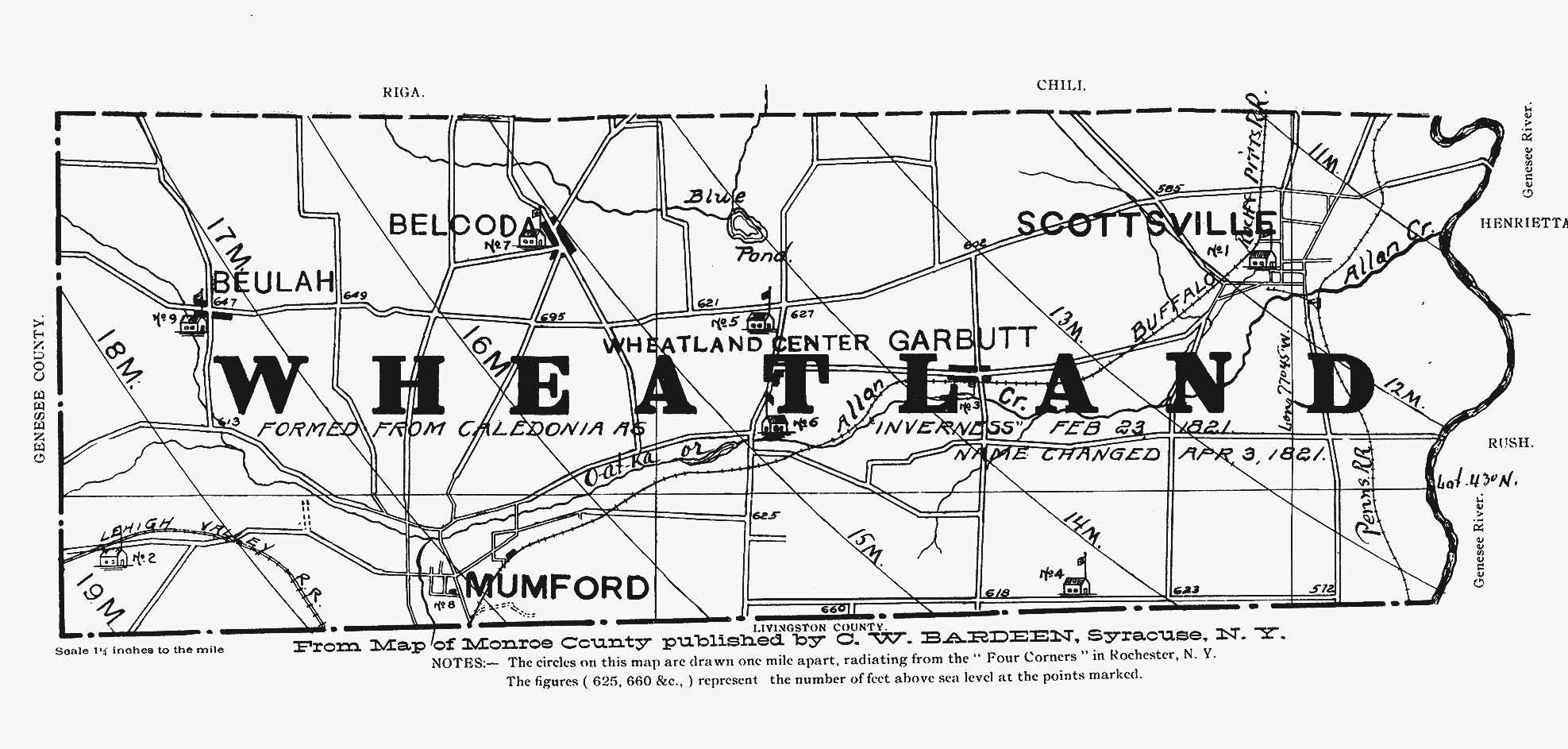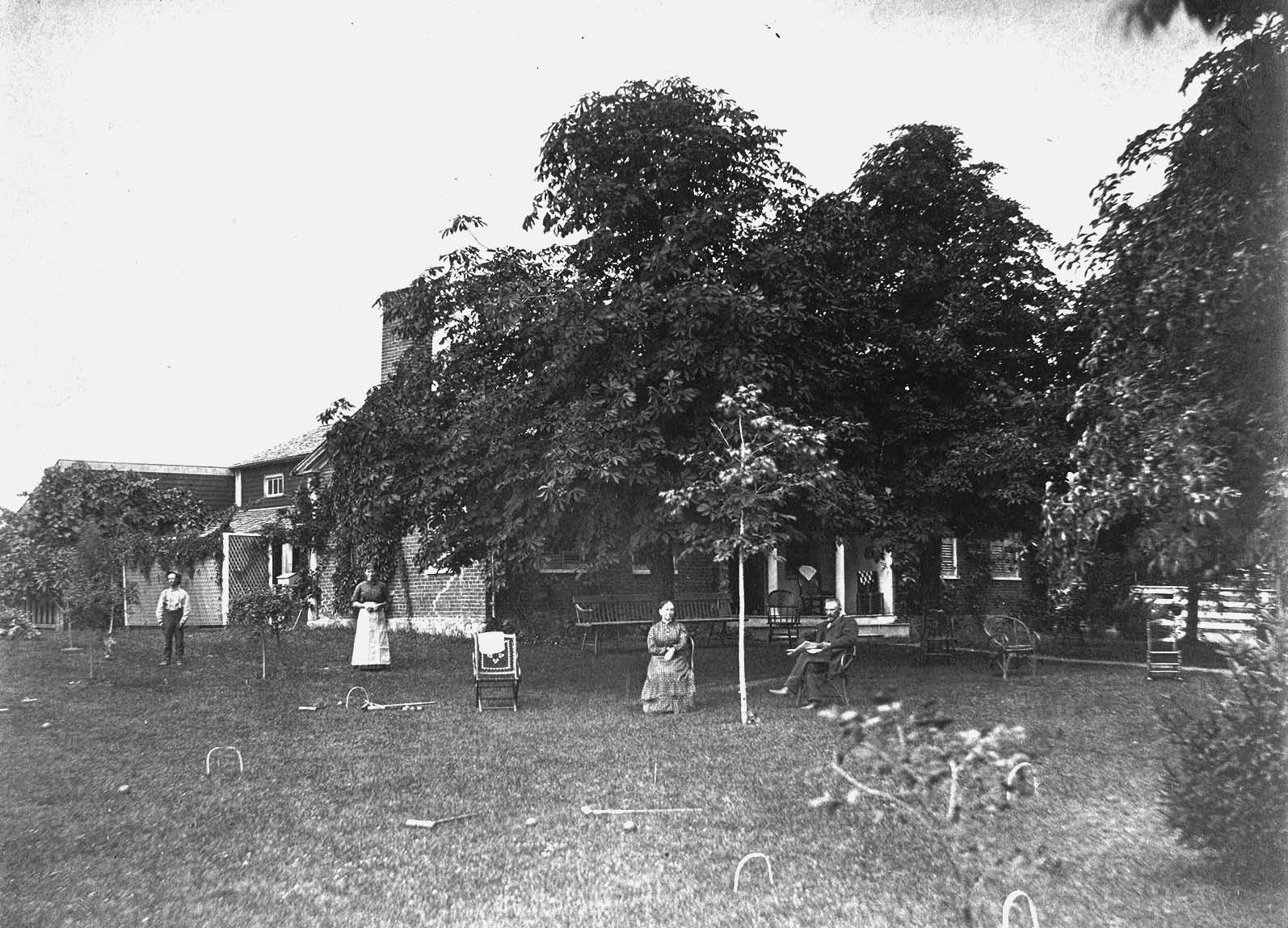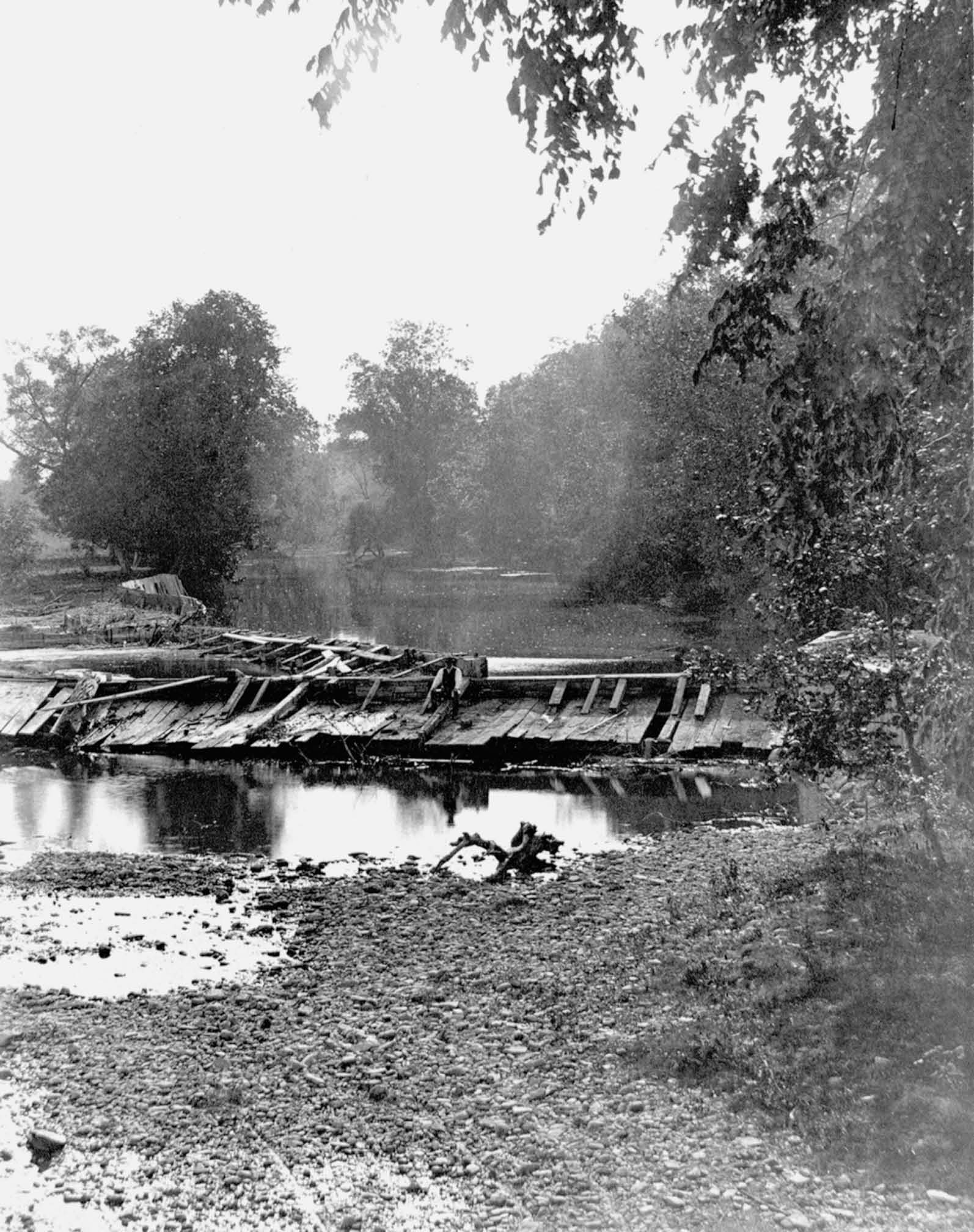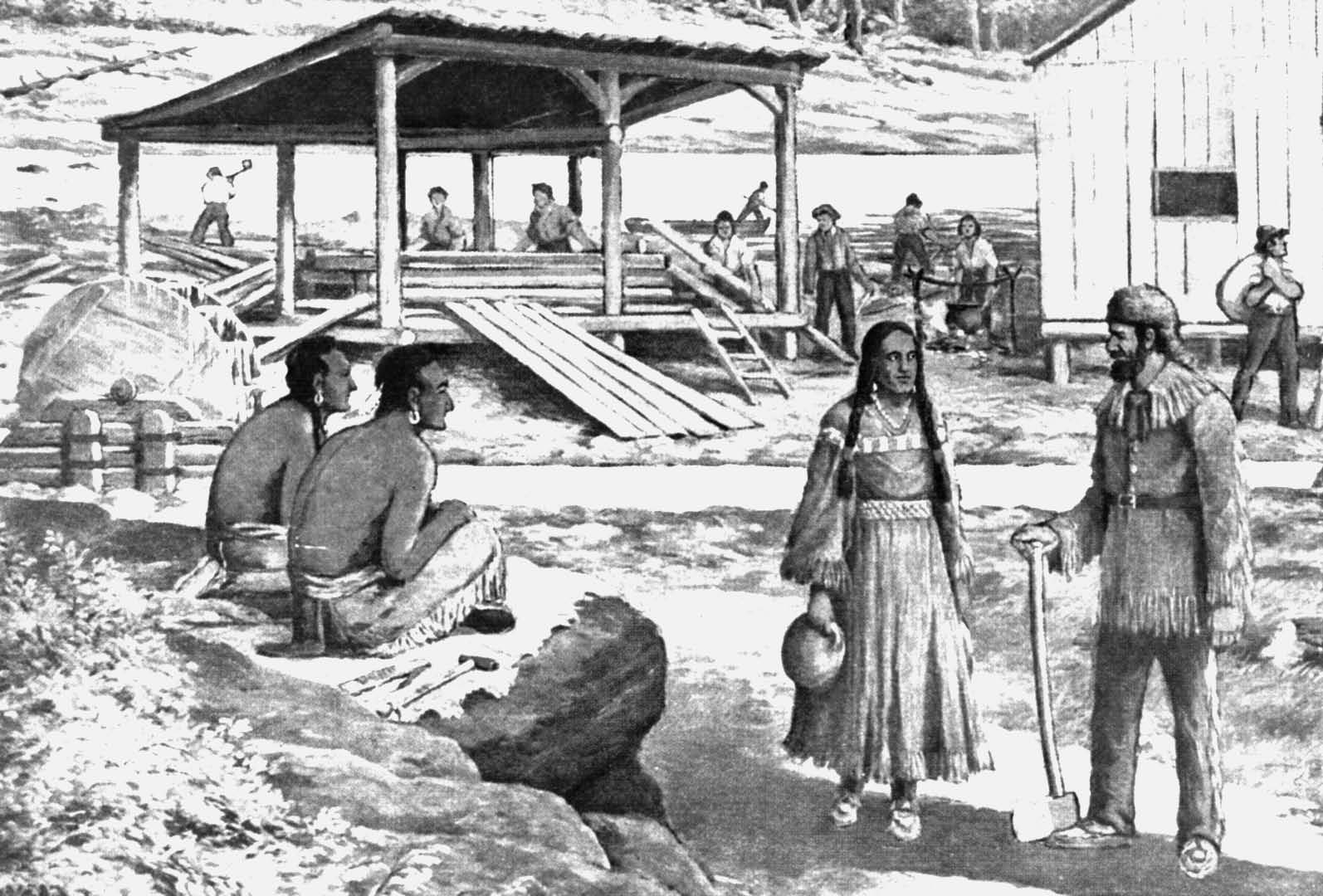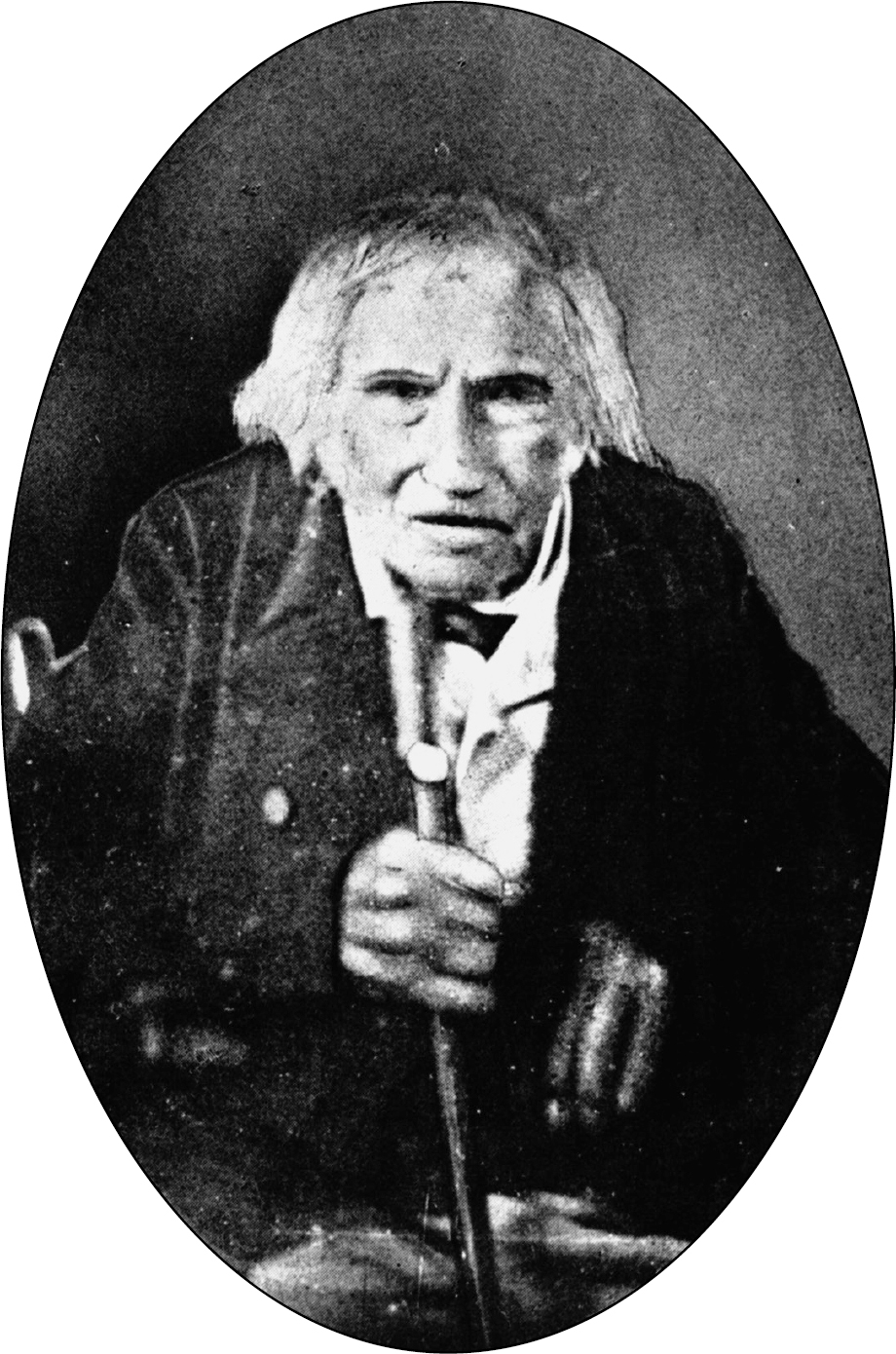The town of Wheatland is fortunate to have three sources of historical information available to the public. Records in the Town of Wheatland Historians Office include cemetery lists, photographs, census records, and newspaper clippings. The Scottsville Free Library Cox Local History Room holds a reserve collection of maps, photographs, burial information, and the Schmidt family history file. The Wheatland Historical Association has a unique assortment of 19th- and 20th-century books and boxed papers featuring western New York and Wheatland history. Except for those credited to individuals or institutions, the photographs in this book came from these three collections.
The references consulted during the preparation of this book were Carl F. Schmidts History of the Town of Wheatland ; George E. Slocums Wheatland, Monroe County, New York ; Ella McGinniss Pictorial Wheatland ; F. W. Beerss A tlas of Monroe County, N.Y. ; Landmark Society of Western New Yorks Historic Preservation Report, Wheatland, Scottsville, Mumford ; and W. H. McIntoshs History of Monroe County, New York.
We wish to acknowledge those people and groups that assisted us. Rebekah Collinsworth, our editor, clarified Arcadia Publishing procedures and has been our guide. Our special thanks go to Richard LeRoy and James Lesch for their generous assistance in proofreading the manuscript and to Ann Mathias for her technical assistance. Town historian Florence Field provided historical information.
We are grateful to all those in the community who graciously shared their old pictures with us. We extend our thanks to our families and friends for their support and help with this project. Hundreds of images of local scenes were considered; we hope you enjoy those used in the final selection.
INTRODUCTION
The town of Wheatland is located in the southwest corner of Monroe County, about 11 miles from Rochester. The township is three and a half miles wide and nine miles east and west in length. The land, at an elevation of 605 feet, is varied in some places with rolling hills sculpted by glaciers. Oatka Creek flows east across the entire town from the Genesee County line to empty into the Genesee River.
When the first permanent settlers, the Sheffers, came to the area in 1789, all of western New York was included in Ontario County. During the 1790s, there was a trickle of new settlers, including Isaac Scott, for whom the village of Scottsville is named, and immigrants from Scotland, who settled the hamlet of Mumford. In 1797, the town of Northampton was formed, extending from the Genesee River to Lake Erie.
After 1800, the flow of newcomers increased to a steady stream, and the hamlets of Garbutt, Wheatland Center, Beulah, and Belcoda were founded. In 1821, the town of Inverness, renamed Wheatland after six weeks, was formed as part of the new Monroe County.
In spite of the hardships of life on the frontier, the settlements flourished. The fertile land yielded abundant wheat crops, and gypsum was discovered under its surface. The 1830s and 1840s were years of great prosperity in Wheatland. The successful farmers, millers, and businessmen became wealthy. Improved transportation made it possible to ship wheat and other products to Rochester and beyond. The citizens of Wheatland established schools, churches, and civic organizations, and built many of the areas renowned Greek Revival houses.
After enjoying half a century of prosperity the tide turned in the 1850s when the wheat crops failed, and then the Civil War took its grim toll. Through the next 100 years, the population of Wheatland remained stable at about 2,000. The 1950s and 1960s brought new growth to the town, as Rochester workers sought houses in outlying rural areas.
Today over 5,000 people live in Wheatland, but most of them work and shop elsewhere. Because of its tranquil setting, Wheatland has become a popular destination for recreation. Visitors come from all over to fish in Oatka Creek, hike the trails, drive along the country roads, picnic in the parks, or stroll through Genesee Country Village and Museum. As the pictures in this book clearly illustrate, Wheatland has a rich heritage, cherished by its citizens. An understanding and appreciation of the past will guide future generations in maintaining the quality of life that is enjoyed in the town of Wheatland.
Oatka Creek has been the centerpiece of the town of Wheatland throughout its history. This picture shows the remains of the wooden dam near Bowerman Road where water was diverted to the millrace that powered mills in the village of Scottsville. In the early days, mills were built and communities grew up along the creek banks. The Oatka remains important today, as people now come to fish, canoe, swim, or to be refreshed by the beautiful scenery.
One
THE PIONEERS
Pioneer settlement of the entire region west of the Genesee River in New York began in Wheatland. The first settler was Ebenezer Indian Allan, who came in 1786 and built a cabin near the confluence of Oatka Creek with the Genesee River. In 1790, Allan and his family left for the waterfalls of the Genesee River, where he built a sawmill and a gristmill, the first structures in what is now the city of Rochester.
Peter Sheffer and his sons, Peter Jr. and Jacob, came to Wheatland from Pennsylvania in the fall of 1789 and spent the winter with Ebenezer Indian Allan and his family. In the spring, the Sheffers gave Allan a good price for his land and cabin. They were the first permanent settlers in the town. This is a picture of Peter Jr., who married Elizabeth Schoonover and lived to be 89 years old.


